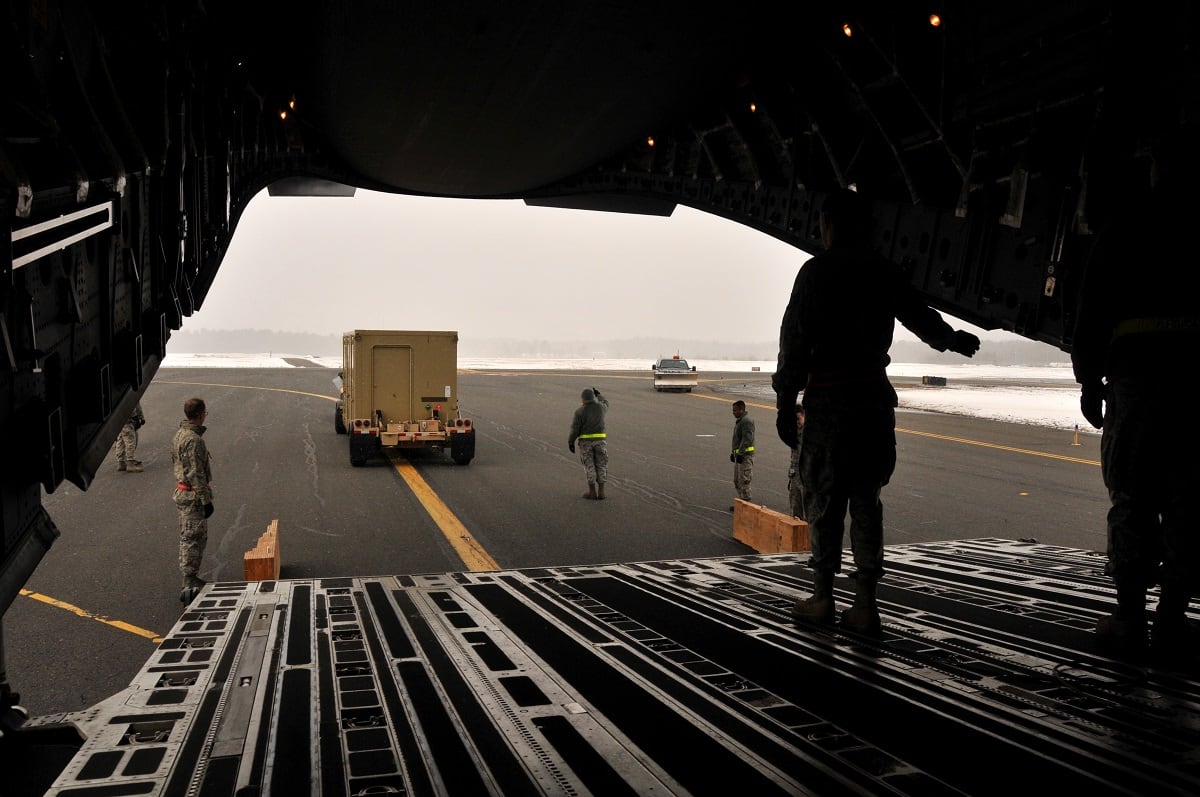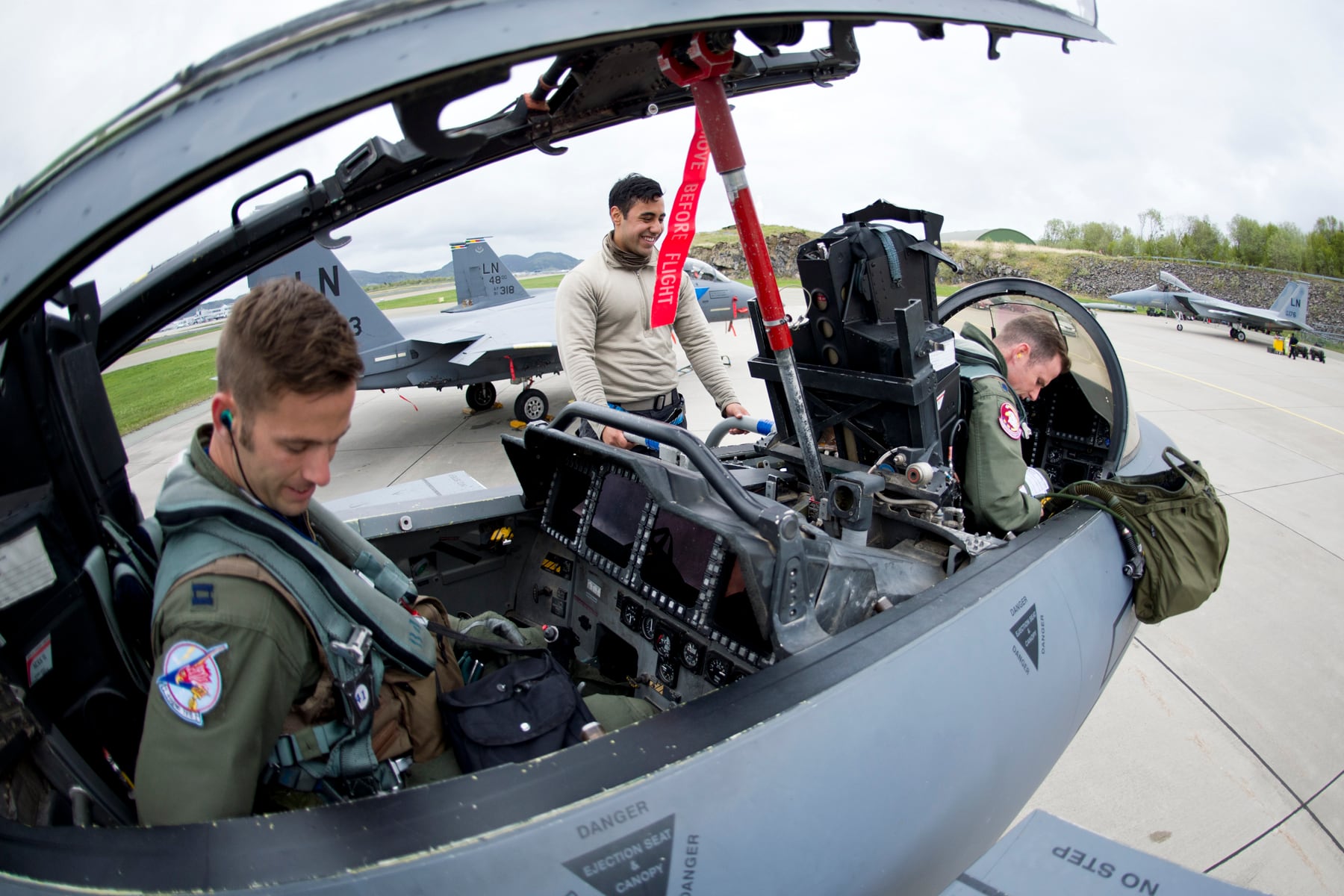RAF FAIRFORD, England — Since 2017, the amount of money the Air Force is spending to deter Russian aggression has almost tripled. That hike is having a real impact on readiness, the commander of U.S. Air Forces in Europe told Defense News on July 14.
“Those funds have enhanced our lethality, our responsiveness and our resiliency and we want to make sure that our soldiers, sailors, airmen and Marines are in a position to where they can be quicker and faster and sharper and stronger than their predecessors,” said Gen. Tod Wolters in an exclusive interview at the Royal International Air Tattoo.
The amount of money spent by the Air Force on the European Deterrence Initiative — the portion of the budget that invests in training and infrastructure meant to make Russia think twice about a confrontation with the United States or its allies — has shot up from $388.7 million in fiscal year 2017 to $1.07 billion in FY18. A fiscal 2019 request of $1.13 billion is still yet to be approved by Congress.
RELATED

Much of the Air Force spending on EDI goes toward building up partners’ bases, predominantly in Baltic nations like Estonia and Latvia or other Eastern European countries along Russia’s border.
“It could be something as simple as rebuilding an air traffic control tower to where the visibility is 360 degrees and that controller can actually see every single aspect of the pattern from takeoff to landing,” Wolters said.
“A simple improvement in that area will improve conditions for air launch and recovery, allow you if needed to increase the number of launches sand recoveries which will allow you to fly more, spend more time training side by side, and improve your readiness.”
This year, the Air Force wants to spend $368.6 million to pre-position equipment and $363.8 million for military construction in FY19 — a major increase from FY17, when it spent about one-seventh of that.
Those investments would pay for everything from a new taxiway in Rygge, Norway, at a cost of $13.8 million to a $119 million facility in Ramstein, Germany, that would store tents, vehicles and other materials necessary if the Air Force needed to forward deploy to a country like Latvia or Poland.
Enhancements to infrastructure aren’t glamorous, but they can make a real difference in the quality of life to the airmen temporarily deployed there, said Wolters, citing improvements to beddown conditions at airbases in Estonia and Lithuania.
“The chow halls are just improved a little bit. There’s better access to hotels because we’ve figured out which hotels to go to, which ones are closest to the installations, because we’ve built this relationship in the embedded community,” he said.
Wolters also touted the effect of theater security packages, the service’s name for temporary rotations of combat aircraft, many of which are funded under EDI.
Consider the fact that when an F-15 squadron from the Air National Guard deploys to Romania — as is currently the case — those pilots will be working with air traffic controllers that could be located in anywhere from Camp Turzii to Mihail Kogălniceanu Air Base. If that person has a thick accent, precious seconds and minutes can be lost as Romanian and U.S. troops try to communicate with each other.
“The quicker you can communicate what’s most important, the more capable you’ll be,” he said. “That doesn’t sound all that exciting, but saving seconds in an air confrontation could mean the difference between life and death. Today, it certainly enhances our ability to deter because we’re more aligned. We’re more transparent because we better understand each other as a result of having a longer and larger relationship.”
RELATED

Although it’s rare that a general in the U.S. military says he’s getting enough money, Wolters says the EDI budget is at just about the right level of “smoothly and steadily” increase readiness.
“If you’ve got an operating environment and it’s not ready, willing and able to receive a quadrillion dollars and expend it, it won’t do you a whole heck of a lot of good,” he said.
“But if you’ve got an operating environment that gained predictability as a result of great conversations about schedule and flows of resources and time and money, you can continue with these readiness gains.”
Correction 7/23/18: A prior version of this story mistated the model of U.S. Air Force aircraft currently based in Romania as part of a theater security package. There are F-15s deployed there.
Valerie Insinna is Defense News' air warfare reporter. She previously worked the Navy/congressional beats for Defense Daily, which followed almost three years as a staff writer for National Defense Magazine. Prior to that, she worked as an editorial assistant for the Tokyo Shimbun’s Washington bureau.








